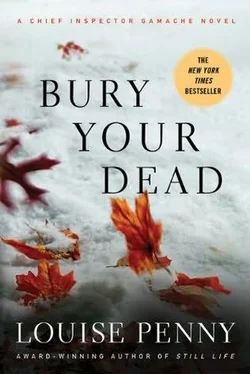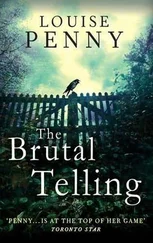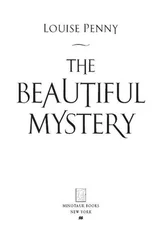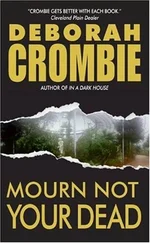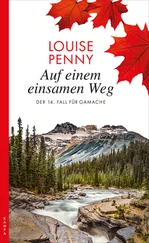Louise Penny - Bury Your Dead
Здесь есть возможность читать онлайн «Louise Penny - Bury Your Dead» весь текст электронной книги совершенно бесплатно (целиком полную версию без сокращений). В некоторых случаях можно слушать аудио, скачать через торрент в формате fb2 и присутствует краткое содержание. Жанр: Старинная литература. Описание произведения, (предисловие) а так же отзывы посетителей доступны на портале библиотеки ЛибКат.
- Название:Bury Your Dead
- Автор:
- Жанр:
- Год:неизвестен
- ISBN:нет данных
- Рейтинг книги:4 / 5. Голосов: 1
-
Избранное:Добавить в избранное
- Отзывы:
-
Ваша оценка:
- 80
- 1
- 2
- 3
- 4
- 5
Bury Your Dead: краткое содержание, описание и аннотация
Предлагаем к чтению аннотацию, описание, краткое содержание или предисловие (зависит от того, что написал сам автор книги «Bury Your Dead»). Если вы не нашли необходимую информацию о книге — напишите в комментариях, мы постараемся отыскать её.
Bury Your Dead — читать онлайн бесплатно полную книгу (весь текст) целиком
Ниже представлен текст книги, разбитый по страницам. Система сохранения места последней прочитанной страницы, позволяет с удобством читать онлайн бесплатно книгу «Bury Your Dead», без необходимости каждый раз заново искать на чём Вы остановились. Поставьте закладку, и сможете в любой момент перейти на страницу, на которой закончили чтение.
Интервал:
Закладка:
“But renovations were being done and they included the sub-basement, where he was found. In fact, I understand it’s scheduled to be concreted over in the next couple of days.”
“That soon? I knew the work was being done but didn’t know when. Won’t happen now, I suppose?”
“Not for a while, I’m afraid.”
The Chief Inspector wondered if the Reverend Mr. Hancock realized he’d all but admitted only a member of the Literary and Historical Society could have killed Renaud. And not a casual user of the fine library, but someone intimately familiar with the old building. The Chief remembered wandering the labyrinthine corridors. It was a warren of hallways, staircases, back rooms.
Would Augustin Renaud have been able to find that trap door on his own?
Almost certainly not.
Someone guided him down there then killed him.
Someone who knew all about the Lit and His.
Someone who knew the sub-basement was about to be concreted over.
Beside him, the Reverend Mr. Hancock had risen. “I’m sorry, I really need to get in to coffee. I’m expected to make an appearance.” He paused and looked closely at the bearded man in front of him.
Like every other Quebecker, he was familiar with Chief Inspector Gamache. The head of homicide appeared on weekly talk shows and news reports trying to explain the decisions the Sûreté was making. Often giving information about a case.
He was always patient, thoughtful, clear in the face of questions shouted and not always civil. He never lost his temper, though Hancock had seen him mightily provoked.
But the man he saw now differed from the man he’d watched for the past three years, and it wasn’t just the beard or the scar. He was still thoughtful, civil, gentle almost.
But he seemed tired.
“The coffee will keep.” Hancock sat back down. The church was tranquil, cool and quiet. “Would you like to talk?”
Armand Gamache knew this young man didn’t mean about the case, and he was tempted. Tempted to tell him everything. But Thomas Hancock was a suspect in a murder case and as much as he longed to confide his sins to this young minister, he resisted.
“Go, please. We can talk another time.”
“I hope so,” said Hancock, rising. “Joy doesn’t ever leave, you know. It’s always with you. And one day you’ll find it again.”
“Merci,” said Gamache, and sat quietly in the church until the ringing of the man’s feet on the floor was silenced, and he was alone with the whispering in his head.
Over at the Literary and Historical Society the library was open again, as were the offices. A yellow police tape, though, was across one door, that led to the trap door that led to the ladder that led to the sub-basement.
And there Inspector Langlois stood.
His team had collected all the evidence, every inch had been gone over, every hair collected, every masticated rat, every bit of cloth. Soil samples had been put in vials. Photos taken, infrared, ultraviolet, black light. Everything.
They’d found, besides the body, a bloody shovel, a satchel with the map, and footprints. All sorts of footprints. Too many, he suspected, to be able to narrow it down.
He had investigators interviewing Renaud’s former wife, his friends, of which there were precious few, his neighbors. They were scouring his home, but it was so packed with books and papers and all sorts of crap it could take weeks.
They were all over this case. Because, like Gamache, Langlois knew a frenzy was just beginning. Whipped by the tabloids, and eventually picked up by the legitimate press. The case was being hijacked. It was no longer just about Renaud’s body, it had become about another, an older mystery, an older body.
Champlain.
Was he here?
Which was why instead of being at Renaud’s apartment sifting through clues, he was in the dim basement, staring at a bucket of potatoes. At least, he hoped that’s what they were.
Beside him Québec’s Chief Archeologist, Serge Croix, stooped.
Neither man was happy to be there. Both knew it to be a waste of time.
“Well, Inspector, I can tell you for certain, that is not Champlain.”
The two men continued to stare at the potatoes.
A trained excavator, brought by the Chief Archeologist, leaned against his shovel. Another held a device and was walking slowly over the dirt floor. Already they’d dug three holes, and in each they found a metal box or bucket with root vegetables. Probably hundreds of years old. Turnips, potatoes, parsnips. But no Samuel de Champlain.
“Bon,” said Croix. “That’s enough. We all know he isn’t here. In fact, if Augustin Renaud believed he was that’s just about a guarantee Champlain is somewhere else.”
“Wait, I have something over here,” said the woman with the device.
Croix sighed but they all trooped to the dark corner. The excavator repositioned the bright industrial lights.
Inspector Langlois felt his heart speed up and around him he could see the others looking expectant, hopeful. Even Croix.
Despite the fact he knew Champlain could not possibly be buried there, Croix could still get his hopes up. Like homicide inspectors, thought Langlois, archeologists dug and dug, and always believed it wasn’t in vain. Something important might lie just below the surface.
The excavator put his shovel into the hard earth and loosened it, nudging it deeper and deeper, an inch at a time so as not to destroy whatever was beneath.
And then they heard the tap and the slight scraping. They’d found something.
Once again, the Chief Archeologist for Québec stooped. Bringing out his tools, finer than the rest, he carefully, painstakingly, cleared away the dirt to reveal a box.
Opening it he shone a light inside.
Turnips. Though one did look a little like the premier ministre .
NINE

Armand Gamache walked briskly up the slippery sidewalk and into the park known as Place d’Armes, the bitter wind full in his face. Foot paths were worn through the deep snow criss-crossing the park. Horse-drawn carriages, the calèches, waited at the top of the park to take visitors around the old city. Behind Gamache was a row of small, picturesque stone buildings, all turned into restaurants. To his right rose the magnificent Anglican Cathedral of the Holy Trinity. Gamache knew this, from experience. But he didn’t look at it. Like everyone else, he kept his head down against the wind, only glancing up now and then to make sure he wasn’t about to hit a person or a pole. His eyes watered and the tears froze. Everyone else looked just like him, their faces round and red and glowing. Like mobile stoplights.
Losing his footing on some ice hidden under a dusting of snow he righted himself just in time, then turned his back to the wind and caught his breath. At the top of the hill, beyond the park and calèches, was the most photographed building in Canada.
The Château Frontenac hotel.
It was huge and gray, turreted and imposing, and rose as though expelled from the cliff face. Inspired by castles it was named for the first governor of Québec, Frontenac. It was both magnificent and forbidding.
Gamache walked toward the Château, past the large statue in the middle of the small park. The Monument de la Foi. A monument to Faith. For Québec had been built on Faith. And fur. But the city fathers preferred to raise a statue to martyrs than to a beaver.
Just ahead, the Château promised warmth, a glass of wine, a crusty bowl of French onion soup. Émile. But the Chief Inspector stopped just short of the shelter, and stared. Not at the Château, not at the gothic statue to Faith, but to another monument off to the left, much larger, even, than the one to Faith.
Читать дальшеИнтервал:
Закладка:
Похожие книги на «Bury Your Dead»
Представляем Вашему вниманию похожие книги на «Bury Your Dead» списком для выбора. Мы отобрали схожую по названию и смыслу литературу в надежде предоставить читателям больше вариантов отыскать новые, интересные, ещё непрочитанные произведения.
Обсуждение, отзывы о книге «Bury Your Dead» и просто собственные мнения читателей. Оставьте ваши комментарии, напишите, что Вы думаете о произведении, его смысле или главных героях. Укажите что конкретно понравилось, а что нет, и почему Вы так считаете.
